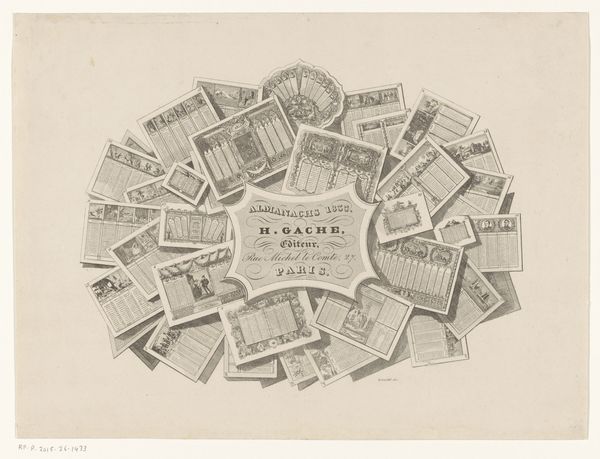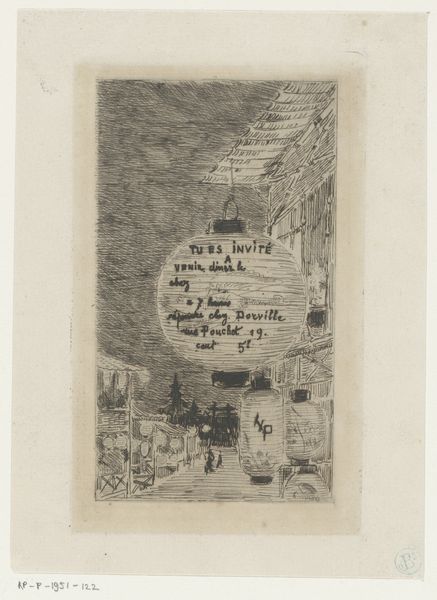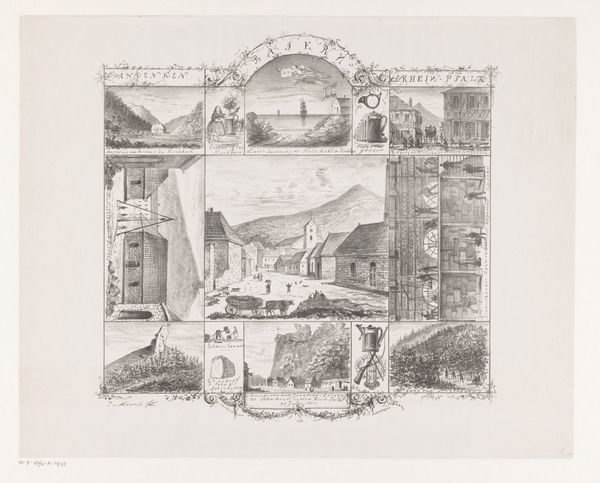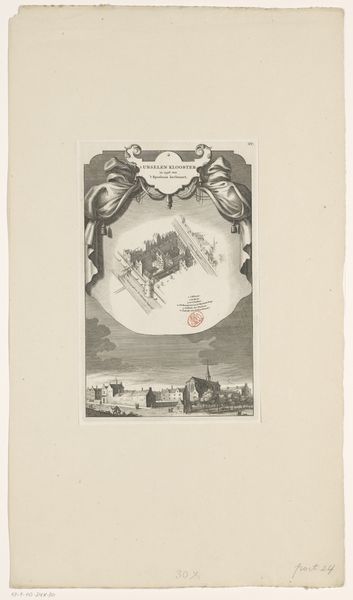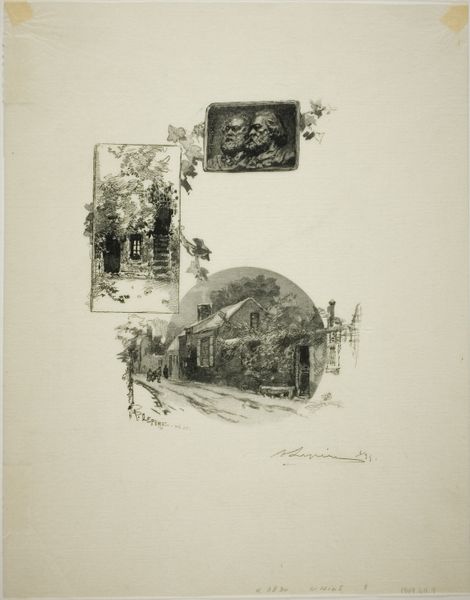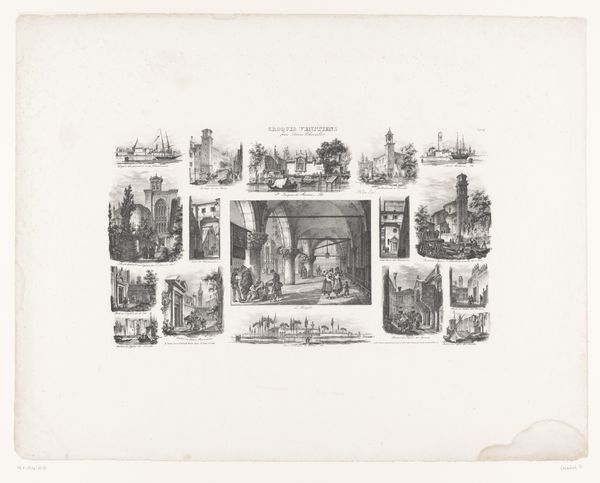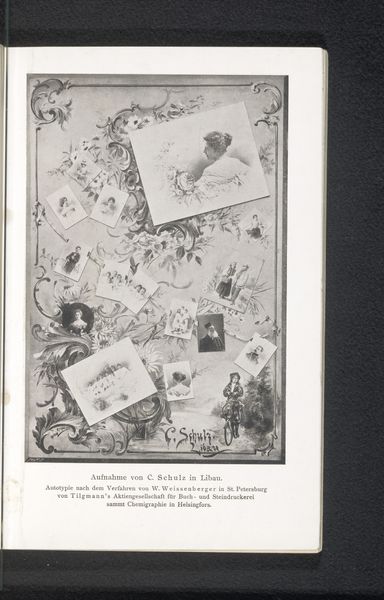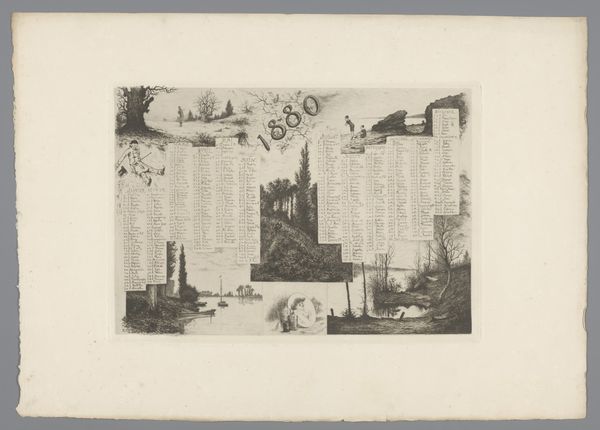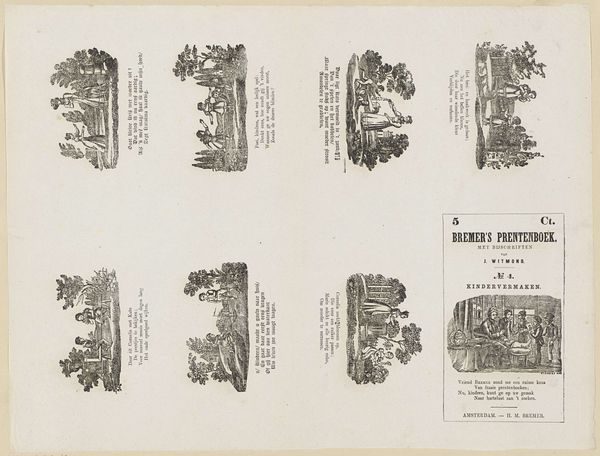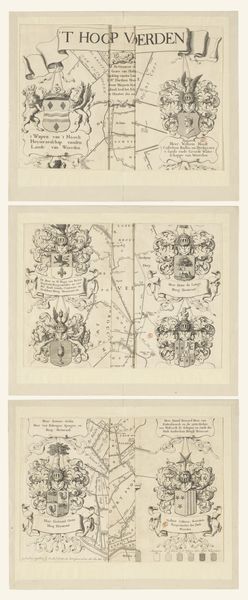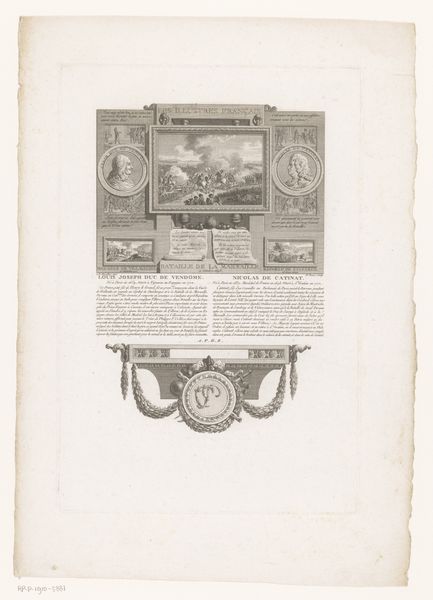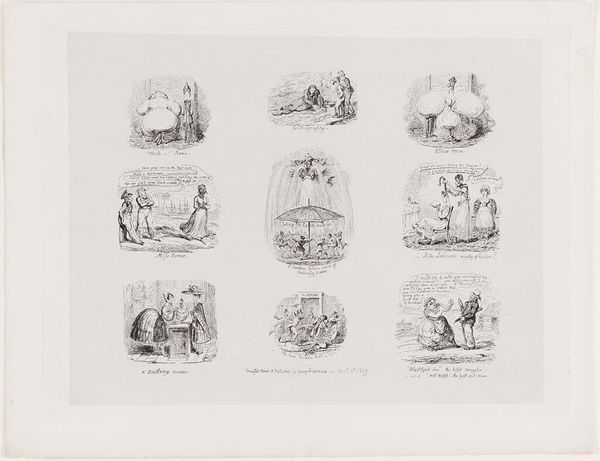
graphic-art, lithograph, print
#
portrait
#
graphic-art
#
lithograph
# print
#
geometric
#
orientalism
#
cityscape
Dimensions: height 154 mm, width 197 mm
Copyright: Rijks Museum: Open Domain
Curator: This is the "Visitekaartje van drukker T en D. Hemelsoet te Gent," a lithograph print dating from about 1845 to 1857, showcasing the work of the printing house T. and D. Hemelsoet. Editor: What strikes me is the sheer abundance of different textures and subjects. It almost feels like a collage before its time, a kind of material study of graphic possibilities all presented within a limited color palette. Curator: Indeed, it functions as both a business card and a portfolio. Note how the cityscapes, portraits, and geometric patterns serve to demonstrate the range of Hemelsoet’s printing capabilities during a period of significant expansion in commercial printing. Editor: And lithography itself allowed for incredible detail and comparatively faster reproduction. This piece seems very consciously playing with the tension between craft and industrial process. I’m curious about the socio-economic impact of having such easily accessible printed materials at that time. What would it have meant for visual communication and consumption? Curator: The availability of printed images and texts massively influenced political discourse, commerce, and public identity. Businesses like Hemelsoet fueled these transformations by providing services to various emerging institutions. Their clientele, I suspect, was quite broad, reaching into growing sectors within a modernizing urban center. Editor: Exactly, so this wasn't just an aesthetic endeavor but part and parcel of industrial development. The piece becomes an artifact embodying how technological progress changes material and cultural production. What I'm really pondering is the experience of working with these methods and materials, what did printing workers, their labor conditions and their communities, look like? Curator: We need to delve into local archives to reconstruct that working environment but you highlight a very pertinent line of inquiry about the labor history implicit in seemingly simple printed matter. And of course the political economy, what type of governance creates demand for commercial printers? Editor: Considering these things in tandem really reshapes how we understand seemingly flat artworks. Curator: Precisely, this card reflects significant cultural and historical transitions far beyond aesthetics.
Comments
No comments
Be the first to comment and join the conversation on the ultimate creative platform.
